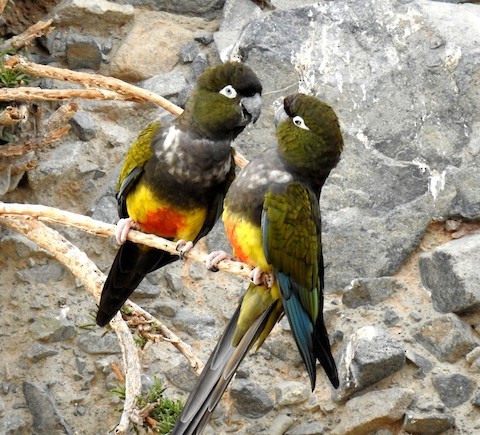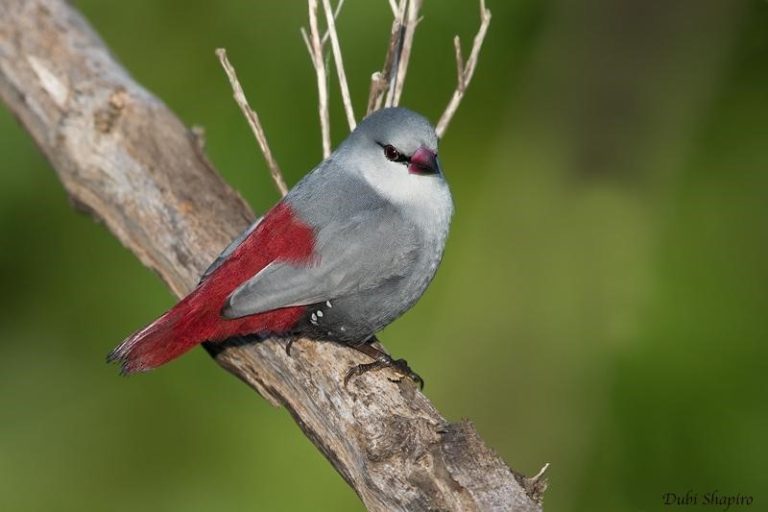Kahaluu-Keauhou, Big Island, Hawaii
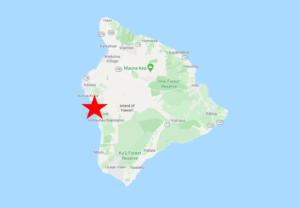
The coastline south of Kailua-Kona is arid and naturally barren, but coastal development and irrigation provide habitat for the only introduced populations of Lavender Waxbill and (more tenuously) Burrowing Parakeet, as well as the also-rare but more widely introduced Red-masked Parakeet and Java Sparrow. A few native species persist along the Kona coast, including Yellow-billed Tropicbird, Wandering Tattler, and Hawaiian Hawk.
Orientation
Directions
Kahaluu-Keauhou is along the Kona coast, about 10 minutes’ drive (7 miles) south of Kailua-Kona, or 30 minutes (15 miles) south of the airport. Kealakehua Bay is about 15 minutes’ drive (6 miles) farther south from Kahaluu-Keauhou.
From Kona International Airport. Take Route 19 (which) south for 14.5 miles, passing through Kailua-Kona (where Route 19 becomes Route 11, the Hawaii Belt Road), turn west on Kamehameha III Road, then go another half-mile to the Keauhou Bay Sheraton Resort.
Birdfinding
Keauhou Bay. The Sheraton Kona Resort & Spa at Keauhou Bay is a well-watered garden on the coastal desert, which supports a fair diversity of introduced birds. The most unusual is Hawaii’s only known flock of Burrowing Parakeet, which has been seen most often just south of the golf course at the Lekeleke-Kuamo’o Burial Grounds, beside Kualanui Point. More common at the resort itself, and in the adjacent town of Kahaluu-Keauhou is the much more firmly established Red-masked Parakeet.
Keauhou Bay is the approximate center of abundance for the Hawaiian population of Lavender Waxbill. Four additional waxbill species have occurred regularly at times, but in recent years mostly Common Waxbill and Java Sparrow. Other locally common introduced songbirds include Yellow-fronted Canary, Yellow-billed Cardinal, and Saffron Finch.
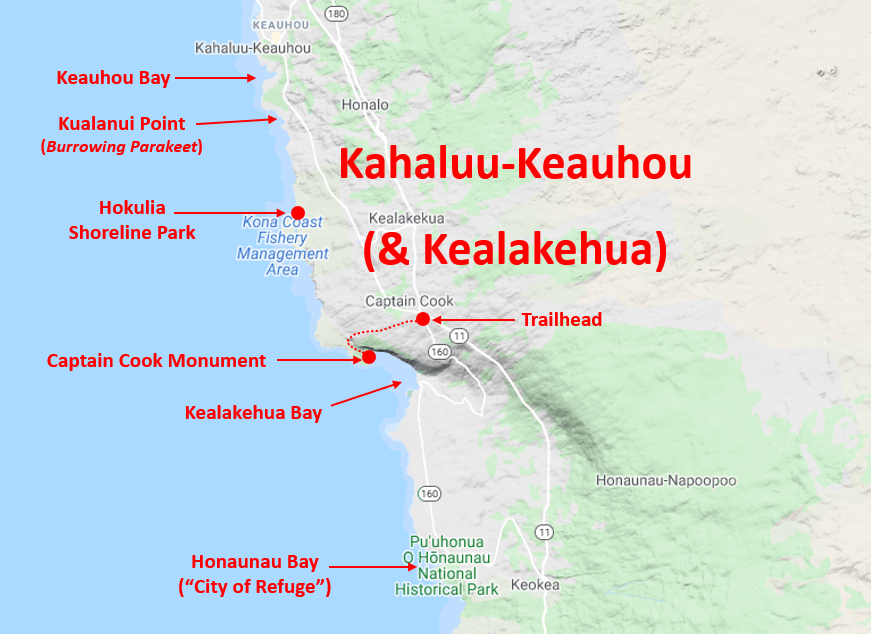
Hokulia Shoreline Park. In the town of Kealakehua, approximately four miles south of Keauhou Bay, turn west on Halekii Street and follow it down through the Hokulia estates and golf course to reach Hokulia Shoreline Park. Just before the parking area, the road passes beside two ponds (i.e., water traps on the golf course) among sparse trees and shrubs, plus a third pond, set back to the south.
These isolated wetlands attract waterbirds which have included Hawaiian Goose, “Hawaiian Stilt”, White-faced Ibis, and several species of migratory waterfowl and shorebirds. Black Francolin occurs along with the more expected Gray Francolin. The introduced songbirds found at Keauhou Bay also occur here, including Lavender Waxbill. Red Avadavat may occur more consistently at Hokulia.
(Note that Hokulia Shoreline Park is open to the public under an agreement that the Hokulia developers needed for approval of their development plan. We expect that the park will remain open to visitors via the Hokulia extension of Halekii Street indefinitely.)
Kealakehua Bay. The Captain Cook memorial obelisk beside Kealakehua Bay, which marks the site of the explorer’s death, is among the state’s premier tourist attractions. Most visitors view it from a boat boarded across the bay at Napo-opo-o Pier, in the town named Captain Cook. These tours often produce sightings of Yellow-billed Tropicbird, which nests in the cliffs overlooking the bay, and infrequently other seabirds: Red-tailed Tropicbird, Wedge-tailed Shearwater, Great Frigatebird, Brown Booby, and Brown and “Hawaiian Noddies”.
It is also possible to reach the monument on foot, via a 2-mile trail (4-mile round-trip hike), which begins near the start of Napo-opo-o Road, just below its intersection with Route 11. The trail has produced many sightings of Lavender Waxbill—among other waxbills, including Common, Java Sparrow, Red Avadavat, Scaly-breasted Munia, and African Silverbill—and a few other birds of likely interest to many visitors, such as Yellow-billed Tropicbird, Hawaiian Hawk, and Yellow-billed Cardinal.
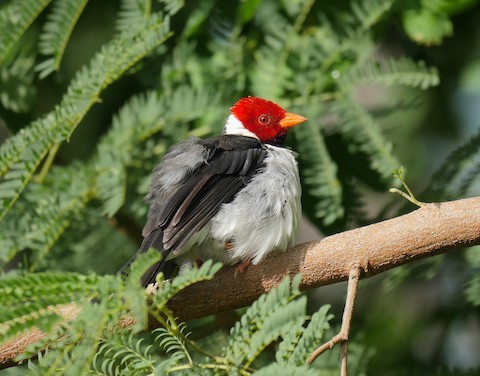
Yellow-billed Cardinal at Kealakua Bay. © Nick Kalodimos
Pu’uhonua O Honaunau National Historical Park (“City of Refuge”). Many tourists continue south from Kealakehua Bay to visit the companion attraction, Pu’uhonua O Honaunau (meaning “place of refuge” at Honaunau) National Historical Park, more popularly known as the City of Refuge. This site is worth visiting for its cultural and historical significance, but it tends to produce fewer interesting bird sightings than the other sites described above.
A few shorebirds can often be found on the large lava headland, usually including Pacific Golden-Plover, Ruddy Turnstone, and Wandering Tattler. Other birds seen regularly on the park grounds are mostly introduced species mentioned above, including Lavender Waxbill and Yellow-billed Cardinal.
Services
Accommodations
The Kailua-Kona area has many hotels, including Kahaluu-Keauhou’s famous Sheraton Kona Resort & Spa at Keauhou Bay, 1-808-930-4900
